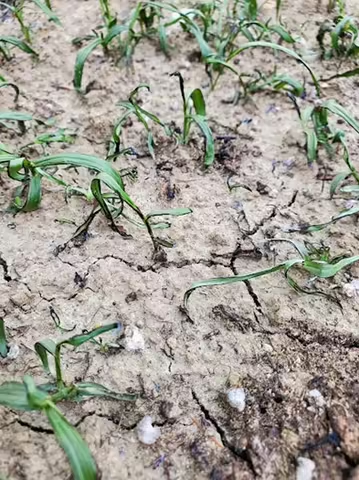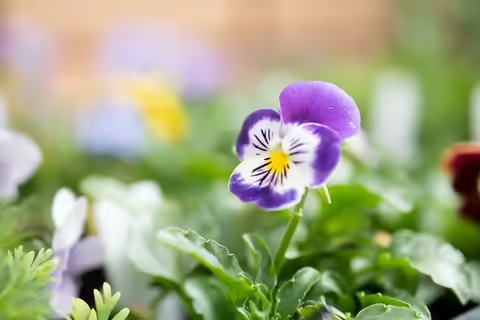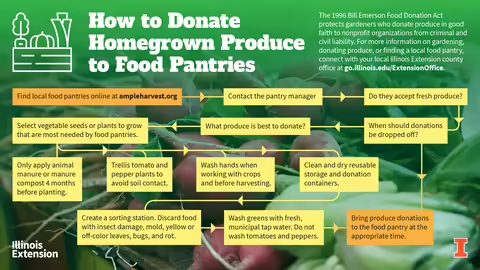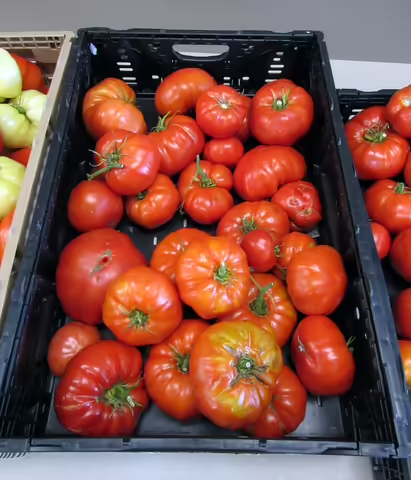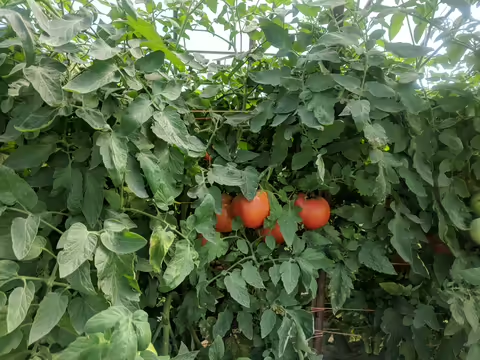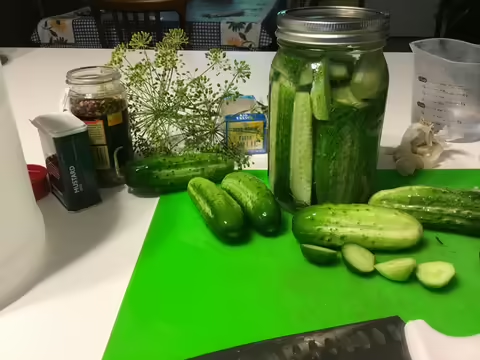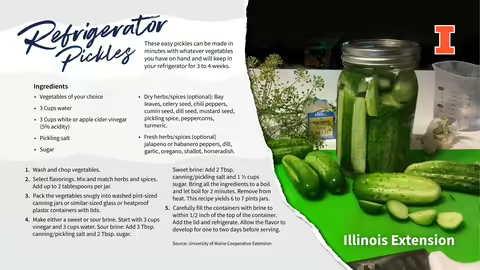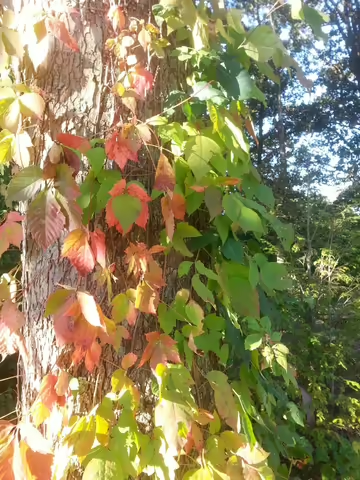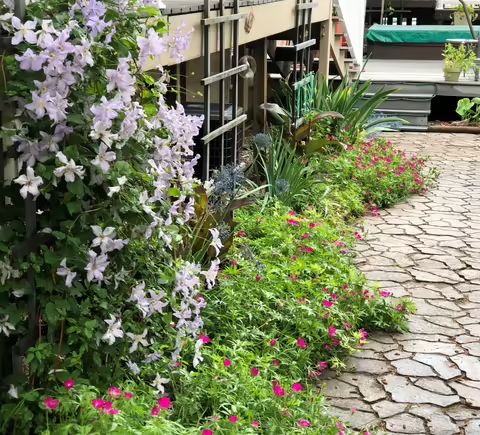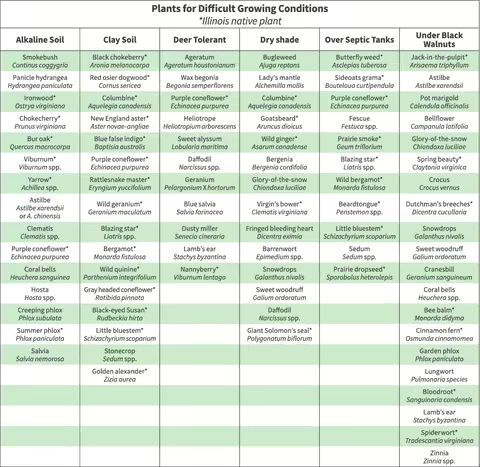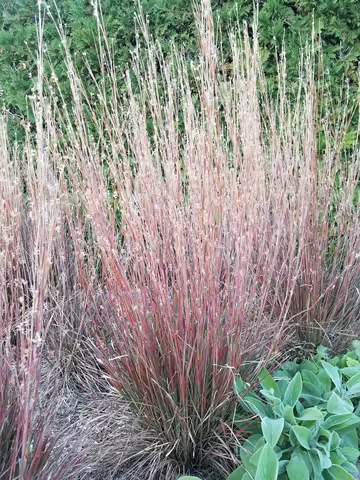Microclovers making a comeback as lawns grow in biodiversity
By Horticulture Educator Nicole Flowers-Kimmerle
Clovers are making a comeback in lawn seed mixes. Today many families want to attract more pollinators to their yards. They are searching for ecologically sound ways to grow grass, including adding white clover back to the turf seed mix. Clover adds diversity to lawns and provides food for bees says Nicole Flowers-Kimmerle, University of Illinois Extension horticulture educator.
If you are looking for an eco-sustainable alternative to lawns, try adding clover to your lawn. The short growing, self-fertilizing, low maintenance, long-living micro clover species will provide more a more biodiverse, durable grass lawn.
White clover, Trifolium repens, was common in lawns before the introduction of broadleaf weed herbicides in the 1950s. Although broadleaves weeds were typically the target of these chemicals, white clover was often damaged or killed.
All clovers are in the legume, or pea, family. Legumes are very useful plants for our environment because they pull nitrogen from the air and convert it into nitrogen in the soil that helps feed plants. Unlike any other plant, legumes create their own fertilizer. Because of these characteristics, there is interest in using microclover in lawns to enhance turfgrass growth and reduce nitrogen fertilizer applications which helps limit fertilizer runoff into waterways.
Unfortunately, white clover sometimes forms clumps and competes with desirable turfgrass, resulting in a non-uniform lawn appearance. Microclover (Trifolium repens var. ‘Pirouette’ and ‘Pipolina’) is a selection of white clover with smaller leaves and a slower, less aggressive growth habit.
Preliminary research finds that microclover mixes better with most turfgrass species than common white clover when seeded at appropriate rates. The microclover seed often comes coated with a Rhizobium bacterium – a natural organism that the plant needs to fix nitrogen, sometimes lacking in residential lawn soils.
There are many benefits to adding microclover to a lawn. It mixes well with turf grasses and provides a uniform appearance while its flowers are a food source for bees. Microclover is competitive with weeds, so less herbicide is necessary. And it helps prevent soil compaction which reduces nutrient runoff.
Lawn clippings that include microclover are a natural organic nitrogen source, which means you can reduce how many times you apply nitrogen.
But microclover may not be suitable for every lawn. It does not tolerate high heat and drought and does not do well in shady conditions. Microclover may require reseeding for long-term growth in the lawn and its top growth dies back in the winter, which can leave bare spots and lead to erosion. Its seeds are expensive and not readily available in retail stores. Most broadleaf herbicides labeled for use in lawns will kill microclover
To establish micro-clover in a lawn, plan to plant between early spring to late summer. No tilling is required. Mow the grass low before seeding. Set the mower to the lowest setting to reduce competition with existing grass. Rake and core aerate the soil.
Sow microclover seed by hand or use a broadcast spreader for a more even distribution in larger areas. Water the area every day for the first seven to 10 days because the soil needs to stay moist until the microclover has sprouted. White clover typically blooms in mid-March and grows slower during the summer months.
For more information on lawn care, connect with your local Illinois Extension county office at go.illinois.edu/ExtensionOffice.
-
Gardener's Corner is a quarterly newsletter from the Illinois Extension team of horticulture experts. Each issue highlights best practices that will make your houseplants, landscape or garden shine in any season. Join the Gardener’s Corner email list for direct access to timely tips!
To outsmart weeds in the garden, take multiple approaches
By Horticulture Educator Sarah Vogel
As gardeners know, weeds will grow nearly anywhere. Even cracks in the pavement can sustain plant life if there is soil, water, and light. Whether a plant is considered a weed depends on how it is affecting the intended use of the site and who is looking at it.
A white oak seedling is not typically considered a weed, but if it’s growing in a vegetable garden it is often treated as one. Some gardeners eliminate broadleaves to maintain a perfectly manicured lawn, though if you’re a hungry pollinator insect, a dandelion, violet, or clover flower may be a welcome sight.
Weeds compete with desirable species for available moisture and nutrients. They can harbor pests and diseases, or even present health hazards. Occasionally weeds are so troublesome that removal is required by the Illinois noxious weed law. Characteristics that make weeds so successful also makes them difficult to control, and gardeners should consider a management strategy to keep weeds in check.
Because weeds reproduce through many means, they must be managed at various times throughout the growing season. The most successful approach is through a combination of control methods and proper timing. To minimize cost and environmental effects, use mechanical or cultural techniques to control weeds before trying pesticides.
Prevent weeds
The first line of defense against weeds is keeping desirable plants healthy. Choose disease-resistant varieties of species that are adapted to the site where they will be planted. Place the right plant in the right site, scout for pests and diseases regularly, provide adequate water and fertilizer, and cover bare soil for weed prevention.
Grow healthy lawns: Keeping a healthy, dense stand of turfgrass is the best way to keep broadleaves out. In established turf, mow lawns high before weeds produce flowers. Lawns mowed at higher deck height have deeper roots and fewer weeds.
Apply mulch: In landscape or vegetable beds, apply mulch to suppress weeds, prevent soil temperature fluctuations, retain moisture, and add organic matter back to the soil. Organic mulch sources are wood chips, shredded bark, straw, grass clippings, shredded leaves, or compost. Inorganic options include landscape fabric, punctured black plastic, or clear plastic which creates a heating effect called solarization.
Grow cover crops: Cover crops are another way to manage weeds in both new and established areas. Some species are chosen for their ability to replenish soil nutrients, while others improve soil tilth, or its physical condition. Cover crops keep weeds in check by forming a living mulch since they grow densely. When the garden bed is ready for use, some cover crops can be turned under and put to work as green manure.
When establishing a new garden plot, manage weeds before planting or you may wind up in a losing battle all growing season. If the pressures of weeds in your garden beds become too demanding, you may consider alternative growing systems like raised beds or containers.
Controlling weeds
A mechanical approach to weed supression is best achieved when weeds are small. tilling, hoeing, shoveling, using a flame weeder, or simply weeding by hand are efficient but may be impractical for large plots. Some perennial weeds may require repeat management.
Chemical control may not be necessary to treat weeds, and most herbicides are not recommended for vegetable gardens. How effective a product is depends on the type of herbicide used, when it’s applied, coverage, and environmental conditions. Applying unnecessary herbicides can cause harm to plants, soil, water, beneficial insects like pollinators, or humans. Always read and follow label directions when using pesticides.
For more information on weed control options, connect with your local Illinois Extension county office at go.illinois.edu/ExtensionOffice.
-
Gardener's Corner is a quarterly newsletter from the Illinois Extension team of horticulture experts. Each issue highlights best practices that will make your houseplants, landscape or garden shine in any season. Join the Gardener’s Corner email list for direct access to timely tips!
Support pollinators with cheerful viola flowers
By Horticulture Educator Brittnay Haag
Roses are red, violets are blue and they have also earned top honors being named Plant of the Year by the International Herb Association. Every year, the association selects plants that are considered outstanding for decorative, culinary, or medicinal use. This year, they have selected Viola, a genus of flowering plants.
With their brightly-colored blooms that resemble cheerful faces peeking out of the foliage, Violas make a great addition to any early-season container or garden plantings. Blooms can be found in a variety of colors, including solids, bicolor, and mixes.
In the language of flowers, a common practice in the Victorian era that allowed messages and emotions to be shared with others, Violas symbolize thoughts filled with love. It is also the birth flower of those born in February.
Members of the genus Viola – including pansies, violets, and Johnny jump ups – are cool-season plants that grow best in spring and fall. They should be planted in areas with morning sun and moist, well-drained soils. As the weather warms in late May and June, many cool-season plants will fade out and stop blooming but can be moved to a cool, shady place in the garden to extend their growing season.
Violas are also great for pollinators. These cool-season annuals supply early spring pollinators with much-needed nectar.
In early March, pollinators emerge looking for food sources to survive. There are very few flowering plants at that time, except spring-blooming bulbs like grape hyacinth and crocus. Planting cool-season annuals provide an important addition to their spring diet. Johnny jump up flowers even have thin dark stripes that serve as guides for the pollinators to find nectar as they visit the flowers and pollinate other flowering plants by transferring pollen.
When planting Violas in spring or fall containers, add interesting twigs, like birch, contorted filbert, or curly willow to the center of containers. These elements add height and interest to the arrangement of low-growing flowers. If planting these annuals in-ground, group them in large masses to create waves of color amongst shrubs, ornamental grasses, or perennials.
An added bonus to including pansies or violets in the garden is that the flowers can be harvested and added as a colorful edible garnish to soups, salads, and desserts. They can also be candied for a sweet treat. If you plan on eating the flowers, raise them without chemical treatment.
Past International Herb Association Plants of the Year to also consider planting in your garden are parsley (Petroselinum), anise hyssop (Agastache ssp.), coriander/cilantro (Coriandrum sativum), and savory (Saturea ssp.).
For more information on gardening, connect with your local Illinois Extension county office at go.illinois.edu/ExtensionOffice.
-
Gardener's Corner is a quarterly newsletter from the Illinois Extension team of horticulture experts. Each issue highlights best practices that will make your houseplants, landscape or garden shine in any season. Join the Gardener’s Corner email list for direct access to timely tips!
Feed your community by safely donating homegrown fruits, vegetables
By Staci Coussens, SNAP-Ed Educator, and Nick Frillman Local Food Systems and Small Farms Educator
When home gardens are bursting with an overabundance of fresh produce, growers start looking for ways to share their bounty. Backyard gardeners can help feed their community by donating fruits and vegetables to local food pantries.
Growers planning on donating to food distribution centers can take steps, even before they plant, to ensure they are providing safe, useable produce.
Connect with your local food pantry
Donating garden crops starts with connecting with a local food pantry. Donors can find a list of pantries that will accept produce at ampleharvest.org.
The pantry’s listing will show what produce is accepted and pantry distribution times. Contact information for the pantry manager is provided so donors can find out what the preferred drop-off time is.
The pantry manager can also advise on what produce is best to donate and what their pantry users like. Preference varies across the state, but the most popular fresh produce items at pantries are greens, peppers, and tomatoes.
If the pantry does not have a refrigerator, only produce that is safe to store at room temperature, such as potatoes and onions, can be donated. However, donors may be able to bring produce just before distribution time so it can be handed out on that day.
Grow with Good Agricultural Practices
Under the 1996 Bill Emerson Good Samaritan Food Donation Act, gardeners who donate fresh fruit and vegetables in good faith to nonprofit organizations for distribution to people in need from criminal and civil liability will not be held liable if someone becomes sick after eating the produce. Nick Frillman, Illinois Extension Local Foods Systems and Small Farms educator, says gardeners should follow good growing practices to reduce chances of food contamination.
Good Agricultural Practices, or GAP, is a set of guidelines created by the USDA that help to reduce the risk of microbial contamination in fruits, vegetables, and nuts and aims to make sure these foods are safe for you or anyone that receives your food donation to eat.
Gardeners planning on donating produce should pay attention to the major factors that affect food safety:
- Soil preparation
- Harvest handling and sorting
- Produce washing, packing, and storage.
Soil prepartion: Most gardeners do not use manure, but this is one of the most likely ways fresh produce is contaminated. Do not use animal manure or manure-based compost at least 120 days before planting in vegetable gardens. Instead, use finished compost, available in bulk from landscaping suppliers or in bags at garden centers.
All food safety concerns are important, but especially so for crops that are typically consumed raw, like greens, tomatoes, or melons. Outbreaks in particular with these types of crops often make the news because they don’t require cooking to be eaten. With crops like potatoes, cabbage, winter squash and others that are rarely consumed raw, there is some added protection because the cooking required to eat these foods kills pathogenic microbes.
Growers should take extra precautions with consumed-raw crops. Trellis tomato and pepper plants so that fruits do not have contact with the soil. Wash hands when working with crops, especially on harvest day.
Harvest and sorting: After harvesting crops, inspect them for things like insect damage, mold, yellow or off-color leaves, bugs, and rot. Creating a sorting station that is used to discard these types of things before continuing the harvest process. Do not let these items make it into the harvest bin.
Washing, packing, and storage: Make sure that the containers used to deliver food donations are washed with fresh, soapy water, scrubbed out, sanitized with a light food-grade sanitizer, rinsed, and dried. Produce put in dirty bins – or even clean bins that are still wet – are subject to bacterial contamination.
Washing is necessary for some crops and not for others. In fact, washing some vegetables, such as tomatoes and peppers, can increase the risk of food safety issues. Greens should be washed with fresh municipal tap water, or a water source that is regularly tested for bacteria.
For more information on gardening, donating produce, or finding a local food pantry, connect with your local Illinois Extension county office at go.illinois.edu/ExtensionOffice.
-
Gardener's Corner is a quarterly newsletter from the Illinois Extension team of horticulture experts. Each issue highlights best practices that will make your houseplants, landscape or garden shine in any season. Join the Gardener’s Corner email list for direct access to timely tips!
Tips for harvesting garden vegetables
By Horticulture Educator Ken Johnson
Whether you started your first garden this year or are a veteran grower, we’re coming up on the heart of harvest season. One of the advantages of homegrown vegetables is that you can harvest produce at its peak quality and flavor.
But knowing when to harvest a crop can be difficult, especially if it’s your first time growing it.
General Harvest Tips
- Harvest in the morning: Almost all vegetables are best when harvested early in the morning. If you can’t harvest in the morning, keep produce out of direct sunlight and cool as soon as possible.
- Harvest when plants are dry: When it comes time to harvest your vegetables, make sure plants are dry. If you harvest while plants are wet, you risk spreading diseases. It’s also important to handle plants with care and avoid damaging them.
- Use pruners: Damaged areas can provide openings for diseases to enter. If the vegetables you are trying to harvest don’t easily come off, cut them off with a knife or pruners to avoid damaging the plant.
Snap or green beans should be picked when the pods are fully grown but before the seeds have started to get large. The beans should be crisp and snap easily. When picking, break off the stem above the cap and harvest frequently.
Cucumbers should be harvested before their skin turns yellow and the seeds become hard. The size of the cucumber will vary depending on the type. Pickling cucumbers are usually picked when they are between 2 and 6 inches long. Slicing pickles should be picked at 6 to 8 inches long and burpless should be 1 to 1½ inches in diameter and up to 10 inches long. Cucumbers develop quickly, so plants may need to be checked every other day.
Peppers can be harvested at any size. Green bell peppers are typically picked when they are mature and about 3 to 4 inches long, firm, and green. If you are growing colored bell peppers, wait until the fruits change color. One way to tell if the fruit is mature is that they will easily break off of plants when picked. Hot peppers can also be picked at any stage but are typically picked when fully ripe. The mature color of the fruit will be different depending on the variety.
Summer squash (straightneck, crookneck, or zucchini) should be harvested when they are small and tender. Pick when the fruits are 2 inches or less in diameter and 6 to 8 inches long. “When growing conditions are favorable, you may need to harvest every other day or daily,” Johnson says.
Winter squash (acorn, butternut, pumpkins) can be harvested when the fruits have turned a deep, solid color, no longer have a glossy appearance, and the rind is hard. Leave at least 2 inches of stem attached and harvest all squash before heavy frosts arrive.
Tomatoes are at their best quality when allowed to ripen on the vine. Tomatoes should be firm and fully colored. During hot conditions, 90°F, tomatoes will quickly soften, and color development is reduced. During these conditions, pick tomatoes when they begin to develop color and ripen them indoors. If plants still have fruit on them in fall, you can harvest mature green fruit before the first frost and ripen them indoors.
For more information on vegetable gardening, connect with your local Illinois Extension county office at go.illinois.edu/ExtensionOffice.
-
Gardener's Corner is a quarterly newsletter from the Illinois Extension team of horticulture experts. Each issue highlights best practices that will make your houseplants, landscape or garden shine in any season. Join the Gardener’s Corner email list for direct access to timely tips!
Create backyard paradise with tropical plant garden
By Horticulture Educator Andrew Holsinger
Summer may be the season for vacations, but if you can’t get away create your own backyard paradise with a tropical plant garden.
Tropical plants can be planted in the ground or in containers and overwintered inside. Treat tropical plants as annuals in the Illinois landscape.
Tropical plants are known to be heat-loving and enjoy the humidity we have in Illinois over the summer. When grown indoors, a humidifier can be a wise investment to replicate the environment they grow best in.
Some plants may be sensitive to direct sunlight, so be cautious in your site selection. Plants that prefer full sun may not get their intense coloring if the container is shaded at all.
Overwintering tropical plants is also an option, especially when grown in containers. Size may be a consideration as the size of the container may influence the size of your tropical plant. Pots of various sizes may be used but 24-to-36-inch diameter pots are a good start. Scout for pests before bringing plants indoors for overwintering.
The root zone is one of the most important parts of growing tropical plants. Bark-based commercial mixes do well for containers, especially when supplemented with a slow-release fertilizer and a water-retention agent. Water-absorptive materials such as sphagnum peat moss or coconut coir need to be balanced with good drainage. Add wood chips to the bottom of containers filled with potting mix.
Elephant ear is the common name of one tropical plant with big, broad leaves. The tuber or corm can be saved to be planted the next year. When planting, orient the corm or tuber correctly. Shoots are the first to emerge and should be planted upright.
Cannas are rhizomes and can have some spread. Many different types of foliage and flowers add to the beauty of this plant when in a container. Rhizomes may need to be divided as they enlarge over time.
Caladiums can make a strong visual statement with a range of colors from pure white to burgundy. This plant likes moist, shady locations. Enrich the soil with compost or humus to enhance the moisture and nutrient retention.
Tropical plants need regular maintenance. They need frequent watering when grown in containers and fertilizing with a slow-release fertilizer will allow them to grow to their fullest potential. Remove dead foliage or flowers and trim excess growth to aid in the health of the plant and keep plants balanced in the container with their counterparts.
Be sure to research the requirements and culture of the tropical plants you choose to grow. Use caution when selecting plants as some have toxic properties. For example, castor bean has toxic seeds.
To complete the tropical effect, considering adding tropical-looking hardy perennials. Clumping bamboo is a non-invasive option compared to other bamboo species.
For more information on tropical plant care, connect with your local Illinois Extension county office at go.illinois.edu/ExtensionOffice.
-
Gardener's Corner is a quarterly newsletter from the Illinois Extension team of horticulture experts. Each issue highlights best practices that will make your houseplants, landscape or garden shine in any season. Join the Gardener’s Corner email list for direct access to timely tips!
Overwhelmed by garden produce? Pickle it!
By Nutrition and Wellness Educator Mary Liz Wright
Sour, sweet, bread and butter, Kosher dills, spears, chips, or slices on a sandwich, or as a snack or side dish – pickles are everywhere. For home gardeners with an abundance of cucumbers and other produce, pickling is a great way to preserve your bounty.
While cucumbers are one of the most commonly pickled items, many foods can be pickled says Mary Liz Wright, University of Illinois Extension nutrition and wellness educator.
Fruit, eggs, artichokes, mushrooms – you name it and it can probably be pickled.
Pickling is an ancient form of food preservation, dating back to 2030 BC when cucumbers from India were pickled in the Tigris Valley. The word “pickle” comes from the Dutch pekel or northern German pókel, meaning “salt” or “brine.”
The pickling process, for the most part, falls into two categories or methods: quick pickles and fermented pickles. Fresh pack or quick pickles are made with vinegar and salt solution or a vinegar and sugar solution. Fermented pickles require time and salt to do the preserving.
Every region of the world has its own form of pickling as a way to extend the life of fruits and vegetables before refrigeration. Eastern Europe has Kosher dills and lacto-fermented cabbage, known as sauerkraut. English sweet pickles are made with vinegar, sugar, and spices, while the French serve tiny, spiced cornichons or cucumbers. In the Middle East, pickled foods are served with every meal, from olives to lemons. Russians pickle tomatoes, and Koreans have spicy kimchi. The Japanese pickle plums and daikon radishes, and Italians pickle eggplants and peppers.
When selecting cucumbers for pickling, chose fresh and firm pickling cucumbers. Cut 1/16 inch off of the blossom end. Use these ingredients in recipes: canning or pickling salt, white granulated sugar or brown sugar, and vinegar with 5% acidity.
To learn more about how to pickle and to find recipes, visit Illinois Exension’s website go.illinois.edu/PicklingFoods. Wright also suggests exploring the National Center for Home Food Preservation at bit.ly/3LtK6sC. Or, connect with your local Illinois Extension county office at go.illinois.edu/ExtensionOffice.
Refrigerator Pickles
These easy pickles can be made in minutes and will keep in your refrigerator for 3 to 4 weeks.
Ingredients
- Vegetables of your choice
- 3 Cups water
- 3 Cups white or apple cider vinegar (5% acidity)
- Pickling salt
- Sugar
- Dry herbs/spices (optional): Bay leaves, celery seed, chili peppers, cumin seed, dill seed, mustard seed, pickling spice, peppercorns, turmeric.
- Fresh herbs/spices (optional) jalapeno or habanero peppers, dill, garlic, oregano, shallot, horseradish.
- Wash and chop your vegetables.
- Select flavorings. Mix and match fresh or dried herbs and spices. Add up to 2 tablespoons per jar.
- Pack the vegetables snugly into washed pint-sized canning jars or similar-sized glass or heatproof plastic containers with lids.
- Make either a sweet or sour brine. Start with vinegar and water. For a sour brine add 3 Tbsp. canning/pickling salt and 2 Tbsp. sugar. For a sweet brine add 2 Tbsp. canning/pickling salt and 1 ½ cups sugar. Bring all the ingredients to a boil and let boil for 2 minutes. Remove from heat. This recipe yield 6 to 7 pints jars.
- Carefully fill the jars with brine to within 1/2 inch of the top of the rim. Place the lids on the jars and refrigerate. Allow the flavor to develop for one to two days before serving.
Source: University of Maine Cooperative Extension
-
Gardener's Corner is a quarterly newsletter from the Illinois Extension team of horticulture experts. Each issue highlights best practices that will make your houseplants, landscape or garden shine in any season. Join the Gardener’s Corner email list for direct access to timely tips!
Leaves of three? Keep poison ivy out of the home landscape
By retired Horticulture Educator Richard Hentschel
Experienced gardeners know where poison ivy is likely to be in the home landscape and newer gardeners will likely learn fast. Without knowing poison ivy is in the yard, it is all too easy to get the oils on your hands and clothing while clearing beds of otherwise harmless weeds says Richard Hentschel, University of Illinois Extension Horticulture educator.
Until you can easily identify poison ivy, the adage of ‘leaves of three let it be’ are pretty good words to live by.
All parts of poison ivy have oil that gives us dermatitis; watery blisters are common. You can get poison ivy even in the winter when plants and vines are dormant. Thoroughly wash your skin with soap and water immediately after encountering the plant.
In the home landscape, it is best to remove poison ivy while it is small and before it begins to vine. Never burn poison ivy as the oils will be in the smoke. Young seedlings will die if pulled out and left to dry, handling them as little as possible.
Use a digger of your choice, so you do not come in contact with the plants and consider wearing an unlined rubber glove.
As a small seedling, poison ivy looks like many other immature weeds, not quickly recognizable. As it continues to grow, poison ivy will grow its characteristic three leaflets comprising a compound leaf and take on vining growth habit. As a vine, it can easily hide in a bed of ground covers, reaching out into the lawn from the edge of the woods, climbing up the house wall with the Boston ivy or other ornamental vines. Gardeners will also find it while pruning their shrubs.
Poison ivy has outstanding reds and oranges for fall color and is quite attractive. Look, but don’t touch.
With slightly bigger plants, gardeners could use a glyphosate pesticide product, but apply it carefully around valuable ornamentals.
When the poison ivy vine runs into a tree trunk, the vine develops brown aerial roots that can cling to the bark. Vines growing up the tree can be as small as a quarter of an inch to over 3 inches in diameter for a larger mature vine. In this third form and its mature stage as a tree-climbing vine poison ivy leaves can be 2 feet in size. This is where the vine begins to flower and fruit annually. Its berries are eaten by wildlife and later deposited along fence rows, beneath deciduous and evergreen tree canopies, and shrub borders.
If you find yourself with a tree vine, the best control option is to carefully cut through the vine at the soil line. Leave the vine to dry in the tree.
For more information about managing poison ivy or other horticulture topics, connect with your local Illinois Extension county office at go.illinois.edu/ExtensionOffice.
-
Gardener's Corner is a quarterly newsletter from the Illinois Extension team of horticulture experts. Each issue highlights best practices that will make your houseplants, landscape or garden shine in any season. Join the Gardener’s Corner email list for direct access to timely tips!
Taking time to select plants for difficult growing conditions helps long-term success
By Horticulture Educator Nancy Kreith
Difficult growing conditions leave gardeners stumped when selecting plants. These planting areas may include alkaline soils, dry shade, over a septic tank, a large local deer population, and more.
Always consider the existing site conditions when selecting new plants for the garden. Look at soil conditions, sun exposure, and drainage. Develop a maintenance plan for weeding and watering while establishing plants for the first two years.
Taking the time to choose plants that suit your unique growing situations can be intimidating, but your work at the start of the project will be rewarded with long-term success. No one likes having to constantly replant an area.
This plant list of trees, shrubs, grasses, and forbs for challenging site conditions to help ease time and efforts for home gardeners.
Alkaline soils: For soils that are alkaline, which is common in northern Illinois, aim for plants that are tolerant of a higher pH level and that will help combat nutrient deficiencies. Illinois native plant options include ironwood, chokecherry, bur oak, viburnum, yarrow, purple coneflower, and summer phlox. Other options include smokebush, panicle hydrangea, astilbe, clematis, coral bells, hosta, creeping phlox, and salvia.
Compacted soil: In urban areas, construction practices have compacted the soil and exposed clay soil from sub-base layers, but there are plants tolerant of these soils. Native plant options include black chokeberry, red osier dogwood, columbine, New England aster, blue false indigo, purple coneflower, rattlesnake master, wild geranium, blazing star, bergamot, wild quinine, gray headed coneflower, black-eyed Susan, little bluestem, golden alexander. Another option is stonecrop.
Septic tanks: Home gardeners should limit their use of water and avoid disturbing soil over septic tanks so chose low-maintenance plants with drought tolerance. Native plant options include butterfly weed, sideoats grama, purple coneflower, prairie smoke, blazing star, wild bergamot, beardtongue, little bluestem and prairie dropseed. Other options are fescue and sedum.
Deer: Deer populations are difficult to deal with and even tolerant plants get eaten from time to time. Protect plants with physical barriers after their initial installation. Deer will not eat many nonnative plants such as ageratum, wax begonia, heliotrope, sweet alyssum, daffodil, geranium, blue salvia, dusty miller, and lamb’s ear. Native options are purple coneflower and nannyberry viburnum.
For more information about plant selection, connect with your local Illinois Extension county office at go.illinois.edu/ExtensionOffice.
-
Gardener's Corner is a quarterly newsletter from the Illinois Extension team of horticulture experts. Each issue highlights best practices that will make your houseplants, landscape or garden shine in any season. Join the Gardener’s Corner email list for direct access to timely tips!
Native prairie grasses create distinct, breezy aesthetic in home landscape
By Horticulture Educator Ryan Pankau
Nothing beats the light and airy look of tall, distinctive grasses in a landscape arrangement. The fluffy seedheads and slender, attractive stems practically dance in the wind on breezy days, adding texture as well as a structural element to any landscape bed.
For many years, there was a trend toward non-native grasses. However, there is a growing interest in native prairie grasses, given their inherent adaptability to our climate and their ecological value.
Big Bluestem, Andropogon gerardii, is one of his favorites for its wonderful height, sometimes reaching up to 8 feet including the seedheads. It’s known for attractive, blue-green foliage and steams that fade to reddish-bronze in fall. Interesting seed heads develop late in the growing season and persist into winter.
Big bluestem fits well in the rear of a border planting or as a backdrop for other, shorter natives. It also works nicely in mass plantings or as a visual screen when planted in groups. It can be maintained as somewhat of a specimen when mixed into native plantings, although it does tend to slowly spread by rhizomes over time. Spread can be limited by other competing prairie plants or by periodic removal of spreading shoots.
Switchgrass, Panicum virgatum, is another very tall native grass used for both its ornamental appeal and its tough adaptability to a wide range of soil conditions. However, one issue with switchgrass is its innate ability to spread, either from rhizomes or by seed. For this reason, it’s probably better used in mass plantings or as a solid border to create visual screening. It works well in problem areas such as wet spots, areas with erosion or locations with some partial shade.
While switchgrass can have a really nice fall color, I think its seedheads provide the most interest. As seedheads mature and expand late in the growing season, they created a cloud-like effect with their open and airy form.
Little bluestem, Schizachyrium scoparium, packs a ton of beauty into shorter stems and fluffier seedheads. Foliage and stems emerge with a deep blue-green color that matures to lighter green with reddish accents at stem nodes. In late summer, flowers begin to emerge as beautiful purplish-red structures that mature into fluffy tufts. Perhaps the plant’s greatest beauty lies in its wonderful fall color creating a spectacular reddish-purple color. Little bluestem works well as a more vertical component that is not overly tall at only 2 to 4 feet by the season’s end. It works well in a great variety of garden uses, from mass plantings to small pollinator pockets.
In my opinion, it is one of the most beautiful and colorful of our native grasses, and it behaves well as it is slow to spread retaining a clump-like habit.
Another smaller native grass that works well in the landscape is prairie dropseed, Sporobolus heterolepis. While it does have interesting seed heads and nice fall color, this plant has most value in its fine-textured foliage during the growing season and much smaller size at around 2 feet in height.
This is one of my favorite plants to add along a sidewalk or at the front edge of a native garden. It creates a welcoming and inviting view with its fine-textured, hair-like foliage that wonderfully frames the planting.
It’s a highly underused landscape plant that deserves more attention given its overall low maintenance requirements and well-behaved habit.
For more information about plant selection, connect with your local Illinois Extension county office at go.illinois.edu/ExtensionOffice.
-
Gardener's Corner is a quarterly newsletter from the Illinois Extension team of horticulture experts. Each issue highlights best practices that will make your houseplants, landscape or garden shine in any season. Join the Gardener’s Corner email list for direct access to timely tips!
Get Gardeners Corner in your inbox!
Gardener's Corner is a quarterly newsletter from the Illinois Extension team of horticulture experts. Each issue highlights best practices that will make your houseplants, landscape or garden shine in any season. Join the Gardener’s Corner email list for direct access to timely tips!

